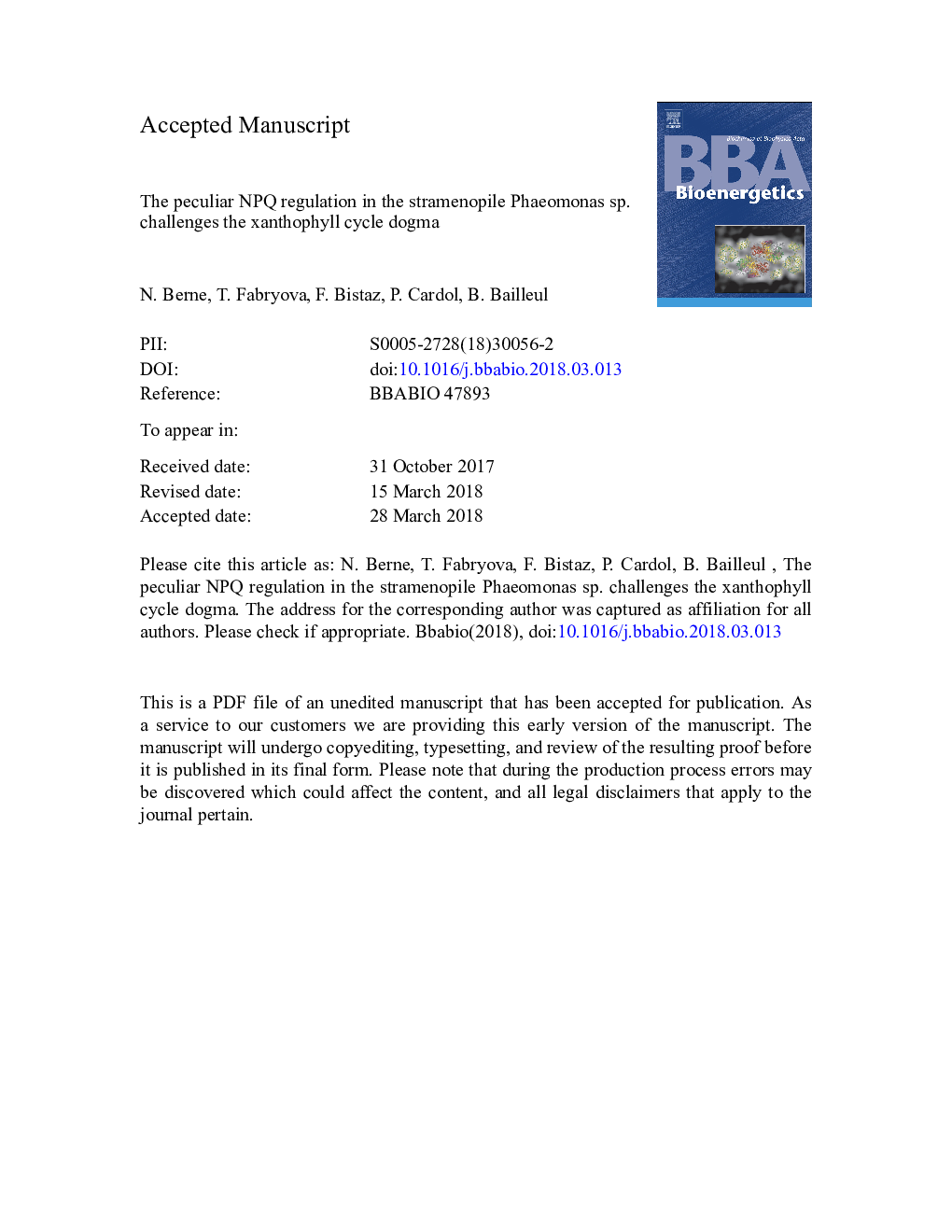| Article ID | Journal | Published Year | Pages | File Type |
|---|---|---|---|---|
| 8298557 | Biochimica et Biophysica Acta (BBA) - Bioenergetics | 2018 | 32 Pages |
Abstract
In changing light conditions, photosynthetic organisms develop different strategies to maintain a fine balance between light harvesting, photochemistry, and photoprotection. One of the most widespread photoprotective mechanisms consists in the dissipation of excess light energy in the form of heat in the photosystem II antenna, which participates to the Non Photochemical Quenching (NPQ) of chlorophyll fluorescence. It is tightly related to the reversible epoxidation of xanthophyll pigments, catalyzed by the two enzymes, the violaxanthin deepoxidase and the zeaxanthin epoxidase. In Phaeomonas sp. (Pinguiophyte, Stramenopiles), we show that the regulation of the heat dissipation process is different from that of the green lineage: the NPQ is strictly proportional to the amount of the xanthophyll pigment zeaxanthin and the xanthophyll cycle enzymes are differently regulated. The violaxanthin deepoxidase is already active in the dark, because of a low luminal pH, and the zeaxanthin epoxidase shows a maximal activity under moderate light conditions, being almost inactive in the dark and under high light. This light-dependency mirrors the one of NPQ: Phaeomonas sp. displays a large NPQ in the dark as well as under high light, which recovers under moderate light. Our results pinpoint zeaxanthin epoxidase activity as the prime regulator of NPQ in Phaeomonas sp. and therefore challenge the deepoxidase-regulated xanthophyll cycle dogma.
Related Topics
Life Sciences
Agricultural and Biological Sciences
Plant Science
Authors
N. Berne, T. Fabryova, B. Istaz, P. Cardol, B. Bailleul,
